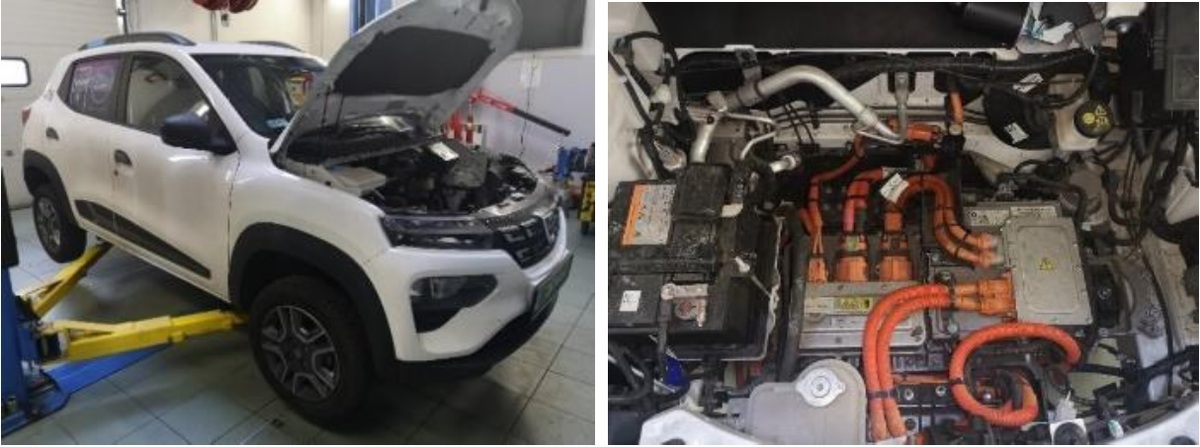Current issue
Online first
Archive
About the Journal
Aims and scope
Publisher and Editorial
Advertising policy
For Authors
Paper review procedures
Procedures protecting authentic authorship of papers
Paper preparation manual
Plagiarism check
Publication ethics
Reviewers
APC
Editorial and Scientific Board
Contact
Reviewers
Comparison of vibration emissions in electric and conventional cars
1
Faculty of Transport and Aviation Engineering, Silesian University of Technology, Poland
Submission date: 2024-11-22
Final revision date: 2025-04-23
Acceptance date: 2025-05-05
Online publication date: 2025-06-04
Publication date: 2025-08-28
Corresponding author
Wioletta Cebulska
Faculty of Transport and Aviation Engineering, Silesian University of Technology, Poland
Faculty of Transport and Aviation Engineering, Silesian University of Technology, Poland
Combustion Engines 2025,202(3), 74-80
KEYWORDS
TOPICS
ABSTRACT
Currently, great importance is attached to the issue of environmental protection, also in the context of the impact of transport on this environment. Limited fossil resources, climate change and global warming are driving the automotive industry towards more efficient and sustainable solutions. These problems are driving car manufacturers to use new technologies and alternative drive systems. Examples of such vehicles are electric cars (EV) and hybrid cars (HEV or PHEV). The issue of the impact of using these means of transport on the emission of pollutants other than exhaust gases is important. An example of such emissions is vibrations. Cars with conventional drive generate vibrations from the operation of the combustion engine. All vehicles, both conventionally and alternatively driven, emit vibrations as a result of the operation of the drive system, suspension system and interaction of tires with the road surface. Vibrations also arise from unevenness of the road surface. At first glance, it seems that vibrations are lower when driving an electric car. In this article, vibration measurements were performed inside an electric vehicle and a conventionally driven vehicle in urban and highway conditions.
REFERENCES (22)
1.
Adamczyk J, Targosz J. Drgania drogowe (in Polish). Wydaw. KRIDM, AGH, Kraków 2003.
2.
Bhuiyan MHU, Fard M, Robinson SR. Effects of whole-body vibration on driver drowsiness: A review. J Safety Res. 2022;81:175-189. https://doi.org/10.1016/j.jsr.....
3.
Bisu CF, Darnis P, Gerard A, K’nevez JY. Displacements analysis of self-excited vibrations in turning. Int J Adv Manuf Technol. 2009;44:1-16. https://doi.org/10.1007/s00170....
4.
Fiebig W. Drgania i hałas w inżynierii maszyn (in Polish). Wydawnictwo WNT. Warsaw 2020.
5.
Ghazali MHM, Rahiman W. Vibration analysis for machine monitoring and diagnosis: A systematic review. Shock Vib. 2021;2021(2):1-25. https://doi.org/10.1155/2021/9....
6.
Greenblatt RE, Pflieger ME, Ossadtchi AE. Connectivity measures applied to human brain electrophysiological data. J Neurosci Methods. 2012;207(1):1-16. https://doi.org/10.1016/j.jneu....
7.
Horváth K, Zelei A. Simulating noise, vibration, and harshness advances in electric vehicle powertrains: strategies and challenges. World Electr Veh J. 2024;15(8):367. https://doi.org/10.3390/wevj15....
8.
Kerber S, Fastl H. Prediction of perceptibility of vehicle exterior noise in background noise. Proc DAGA'08. Dresden 2008.
9.
Krishna K, Mahesha GT, Hegde S, Shenoy BS. A review on vibrations in electric and hybrid electric vehicles. J Inst Eng (India) Ser C. 2023;104(11):423-438. https://doi.org/10.1007/s40032....
10.
Mahdisoozani H, Mohsenizadeh M, Bahiraei M, Kasaeian A, Daneshvar A, Goodarzi M et al. Performance enhancement of internal combustion engines through vibration control: State of the art and challenges. Appl Sci. 2019;9(3):406. https://doi.org/10.3390/app903....
11.
Nader M. Drgania i hałas w transporcie (in Polish). Oficyna Wydawnicza Politechniki Warszawskiej. Warszawa 2016.
12.
Olabi AG, Abdelkareem MA, Wilberforce T, Alkhalidi A, Salameh T, Abo-Khalil AG et al. Battery electric vehicles: Progress, power electronic converters, strength (S), weakness (W), opportunity (O), and threats (T). Int J Thermofluids. 2022;16:100212. https://doi.org/10.1016/j.ijft....
13.
Obsługa techniczna Dacia (in Polish). Dacia; 2024. https://www.dacia.pl/obsluga-t... (accessed on 6.04.2024).
14.
Qin Y, Tang X, Jia T, Duan Z, Zhang J, Li Y et al. Noise and vibration suppression in hybrid electric vehicles: state of the art and challenges. Renew Sustain Energy Rev. 2020;124:109782. https://doi.org/10.1016/j.rser....
15.
Reina G, Leanza A, Messina A. On the vibration analysis of off-road vehicles: influence of terrain deformation and irregularity. J Vib Control. 2018;24(22). https://doi.org/10.1177/107754....
16.
Rozporządzenie Ministra Rodziny, Pracy i Polityki Społecznej z dnia 12 czerwca 2018 r. w sprawie najwyższych dopuszczalnych stężeń i natężeń czynników szkodliwych dla zdrowia w środowisku pracy, Dz.U. 2018 poz. 1286 (in Polish).
17.
Simcenter SCADAS XS: Wszystko co musisz wiedzieć (in Polish). ECTS 2024. https://www.ects.pl/artykul/si... (accessed on 10.09.2024).
18.
Tatsuno J, Maeda S. Effect of whole-body vibration exposure in vehicles on static standing balance after riding. Vibration. 2023;6(2):343-358. https://doi.org/10.3390/vibrat....
19.
Verheijen ENG, Jabben J. Effect of electric cars on traffic noise and safety. National Institute for Public Health and the Environment; 2010. Report 680300009/2010.
20.
Wang X, Osvalder A-L, Höstmad PBU. Influence of sound and vibration on perceived overall ride comfort – a comparison between an electric vehicle and a combustion engine vehicle. SAE Int J Veh Dyn Stab and NVH. 2023;7(2):1543-171. https://doi.org/10.4271/10-07-....
21.
Wróblewski P, Drożdż W, Lewicki W, Miązek P. Methodology for assessing the impact of aperiodic phenomena on the energy balance of propulsion engines in vehicle electromobility systems for given areas. Energies. 2021;14(8):2314. https://doi.org/10.3390/en1408....
22.
Yoshinaga H, Namikawa Y. Predicting noise reduction by electrification of automobiles. Inter-Noise 2009 Congress; Ottawa 2009.
Share
RELATED ARTICLE
We process personal data collected when visiting the website. The function of obtaining information about users and their behavior is carried out by voluntarily entered information in forms and saving cookies in end devices. Data, including cookies, are used to provide services, improve the user experience and to analyze the traffic in accordance with the Privacy policy. Data are also collected and processed by Google Analytics tool (more).
You can change cookies settings in your browser. Restricted use of cookies in the browser configuration may affect some functionalities of the website.
You can change cookies settings in your browser. Restricted use of cookies in the browser configuration may affect some functionalities of the website.



